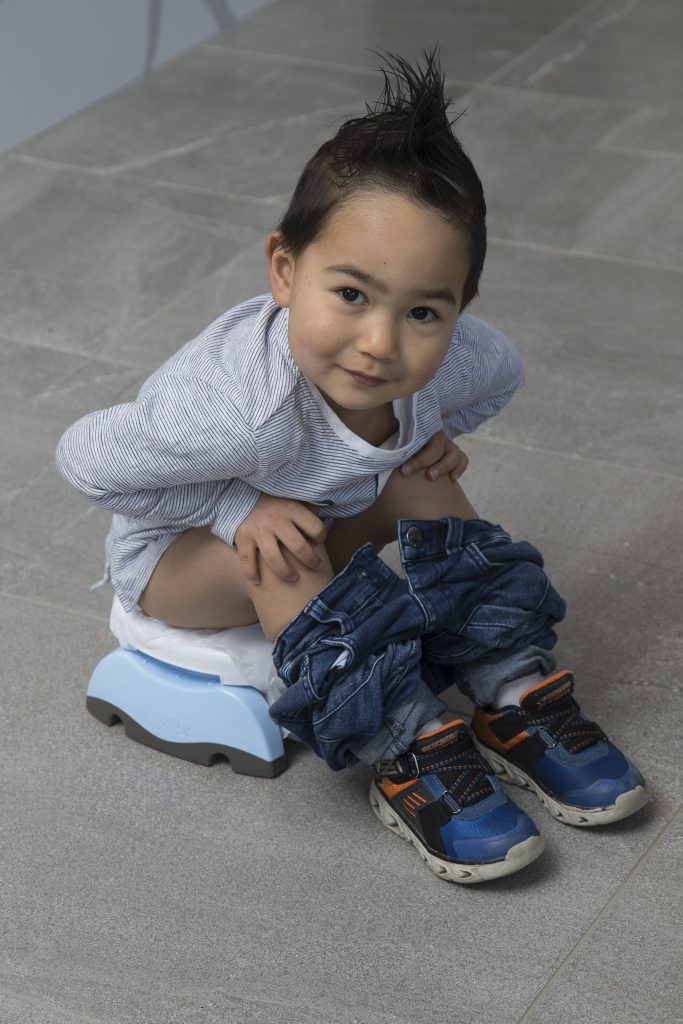
It could be hard to know when your toddler is ready to be toilet trained and it doesn’t help that lots of information around toilet training can be conflicting. But the general truth is that all children will, at some stage, mature out of needing to wear nappies and learn how to use the toilet. Exactly when and how is unique for every little person.
First things first
Decide whether you want your child to use a potty to start with and then transition them to a toilet, or use the toilet from the start. Toilet seat inserts and a step or small ladder can make the toilet more comfortable and accessible.
10 toilet training tips
- Girls tend to toilet train earlier than boys.
- There can be a difference of up to a year or more between daytime training and being dry at night.
- Toilet training is made much easier by waiting until the child shows signs of being developmentally ready.
- Summer can be a more practical time to start toilet training.
- It can help for parents to decide whether they want to potty or toilet train their child from the start.
- Patience and a sense of humour help when toilet training a toddler.
- It can be useful to plan for toilet training at a time when the household is calm.
- Same gender children can learn through role modelling what’s involved in going to the toilet.
- Setbacks are common when toilet training – it’s rarely a smooth, progressive process.
- Children need to feel comfortable and safe when using the toilet.
How will I know my toddler is ready to toilet train?
Wait until your child is around 2 years of age – some toddlers are ready from around 18 months and others not until closer to 2.5 years. Not every child in a family is ready to toilet train at the same age. This is because of individual differences in maturation of the nervous system and it is this factor which influences when and how a child is ready.
Typical signs are when they:
- Can ‘hold on’ and not wee or poo for a couple of hours.
- Can follow simple instructions.
- Can tell you they’re about to go or need to, or already have.
- Show interest in you or others going to the toilet.
- Wake up dry from an afternoon or overnight sleep.
- Start disliking wearing a nappy and try taking it off.
- Have more regular, formed poos.
- Can pull their pants up and down.
A gentle reminder
There is no place for shame, ridicule or punishing small children when they are going (and growing) through the process of toilet training. Most children are eager to please their parents and caregivers and respond best of all to praise.
Breaking down the steps can be helpful e.g. “Well done, you’re sitting on the potty”, or “Thanks for telling mummy you’ve done a wee”. Toilet training is a big stage in a child’s life and at first, it can be confusing and scary.
If you are calm and kind with your child, they’re more likely to progress through toilet training without too much fuss.
How to start
Pick a calm few days when you’re likely to be at home and they can access the toilet easily. Take your toddler to the toilet with you and let them see what’s involved.
- Ask your child if they would like to sit on the toilet (or potty) and do a wee or a poo. Some children prefer to sit first with their nappy still on. As they become used to the idea, the nappy can be taken off.
- Take your child to the toilet every 2 hours and after meals. Even if they say they don’t want to go, it’s the frequency of going to the toilet which will help to reinforce this as a habit.
- When you see your child looking uncomfortable, they’re wriggling around or passing wind, take them gently by the hand and lead them to the toilet.
- Help them to take their pants and nappy off.
- Make toileting a regular part of their daily routine.
Some more helpful tips
- Don’t expect your child to sit on the toilet for longer than 5 minutes. If they haven’t done a wee or a poo in this time, they’re unlikely to.
- If they don’t make it to the toilet in time, don’t get cross or frustrated. Just clean them up and try again next time.
- Show your child what’s involved in wiping themselves. Teach girls to wipe from front to back.
- Decide whether you want your boy to sit or stand to wee.
- Show your child how to wash and dry their hands when they’re finished.
Importantly
Be patient and kind. If you find your child is losing interest and not making much progress, you could forget about toilet training them for a while and try again when they’re a bit older.
Written by Jane Barry, Midwife and Child Health Nurse, February 2024.
Copyright © 2024 Teva Pharma Australia Pty Ltd

